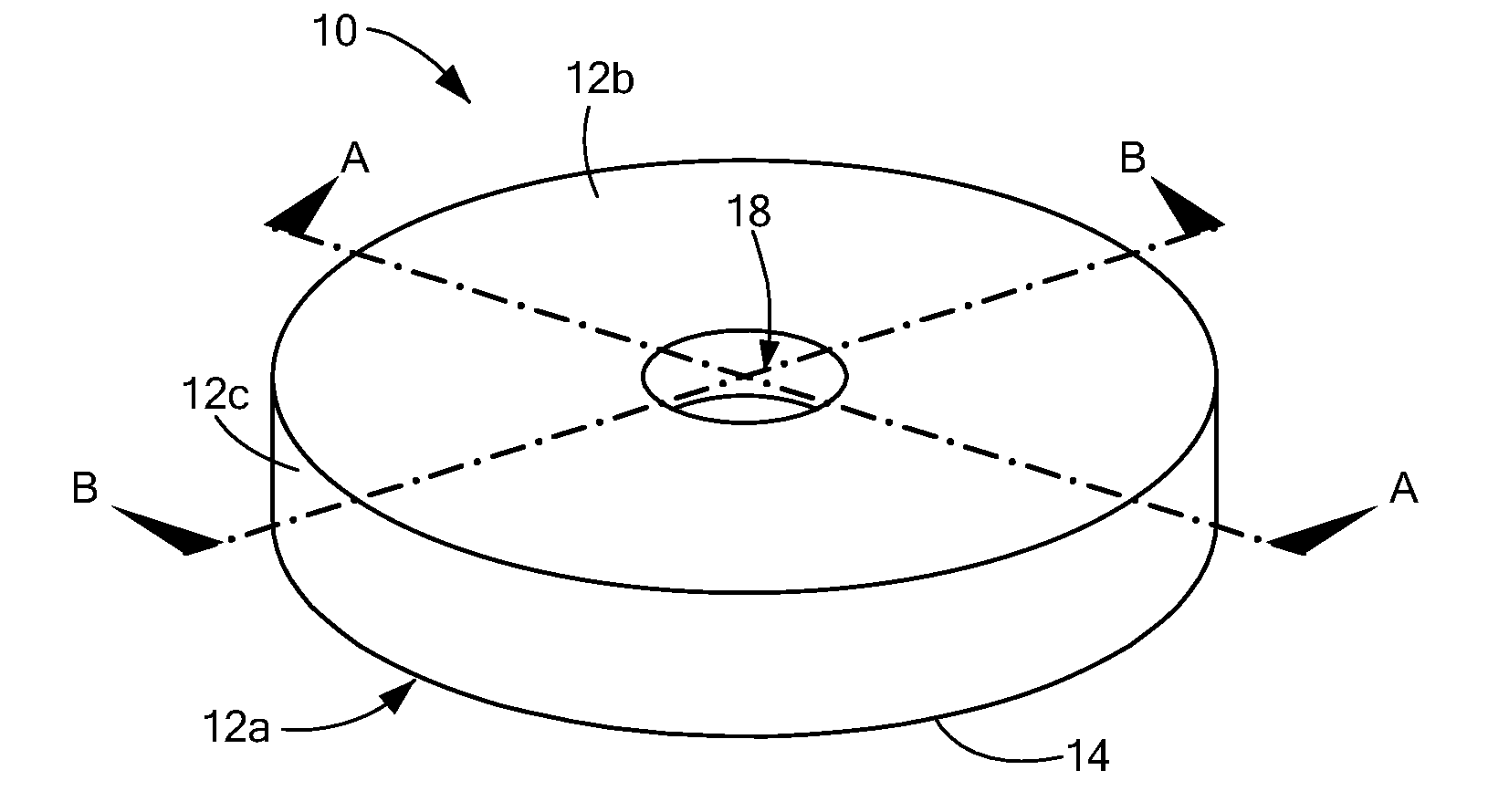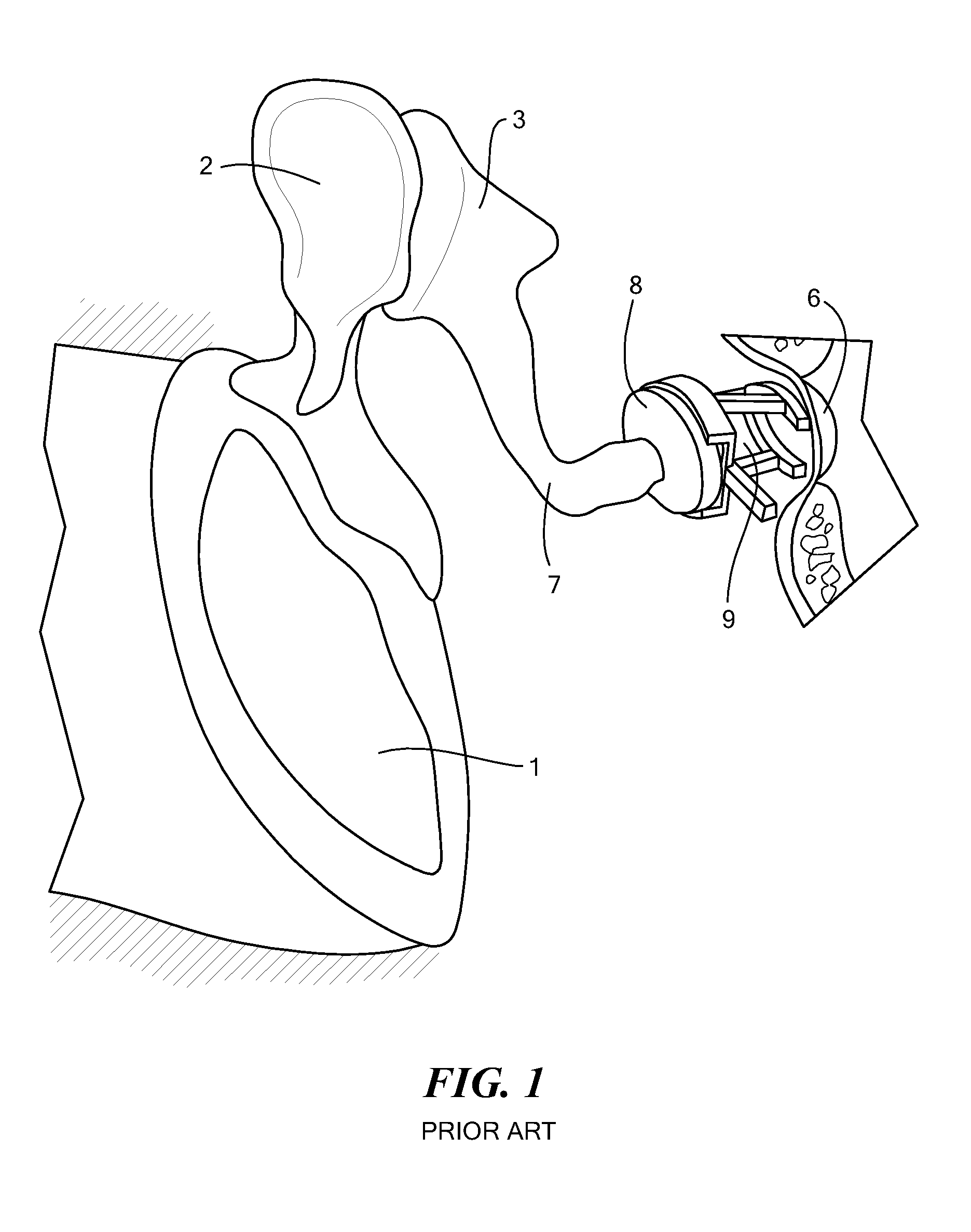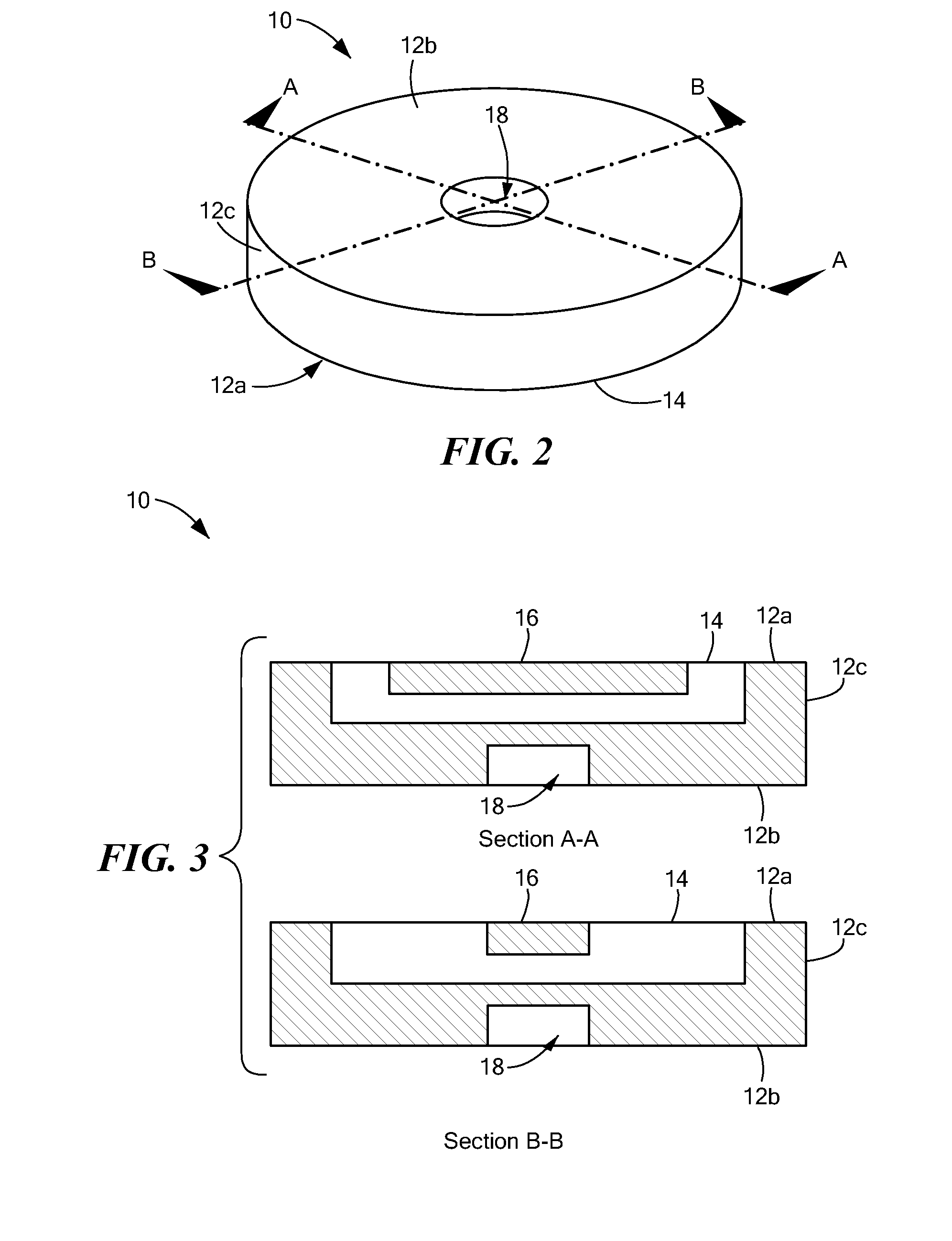Implantable microphone for hearing systems
a technology of implantable microphones and hearing systems, applied in the direction of electrical equipment, deaf-aid sets, etc., can solve the problems of affecting the hearing of the affected and surrounding tissue, the natural ability of the outer ear of directionally filtering the received sound is lost, and the power consumption of such electromagnetic and electrodynamic converters is relatively high, and limits the practical application of cochlear implants and other implantable hearing systems
- Summary
- Abstract
- Description
- Claims
- Application Information
AI Technical Summary
Benefits of technology
Problems solved by technology
Method used
Image
Examples
Embodiment Construction
[0012]In accordance with one embodiment of the invention, an implantable microphone for use in hearing systems includes a housing having a back wall. The back wall has a recess configured to be coupled to an auditory ossicle. The implantable microphone also includes a membrane coupled to a top portion of the housing and a vibration sensor adjacent to the membrane. The membrane is configured to move, e.g., membrane movement may include flexural movement, in response to movement from the auditory ossicle and the vibration sensor is configured to measure the movement of the membrane and to convert the measurement into an electrical signal. The sensor element can be regarded as a force measurement cell inserted into the ossicle chain.
[0013]In accordance with related embodiments, the vibration sensor may be a piezoelectric sensor and the piezoelectric sensor may be shaped as a rectangular bar. The piezoelectric sensor includes piezoelectric material. Movement of the piezoelectric sensor ...
PUM
 Login to View More
Login to View More Abstract
Description
Claims
Application Information
 Login to View More
Login to View More - R&D
- Intellectual Property
- Life Sciences
- Materials
- Tech Scout
- Unparalleled Data Quality
- Higher Quality Content
- 60% Fewer Hallucinations
Browse by: Latest US Patents, China's latest patents, Technical Efficacy Thesaurus, Application Domain, Technology Topic, Popular Technical Reports.
© 2025 PatSnap. All rights reserved.Legal|Privacy policy|Modern Slavery Act Transparency Statement|Sitemap|About US| Contact US: help@patsnap.com



